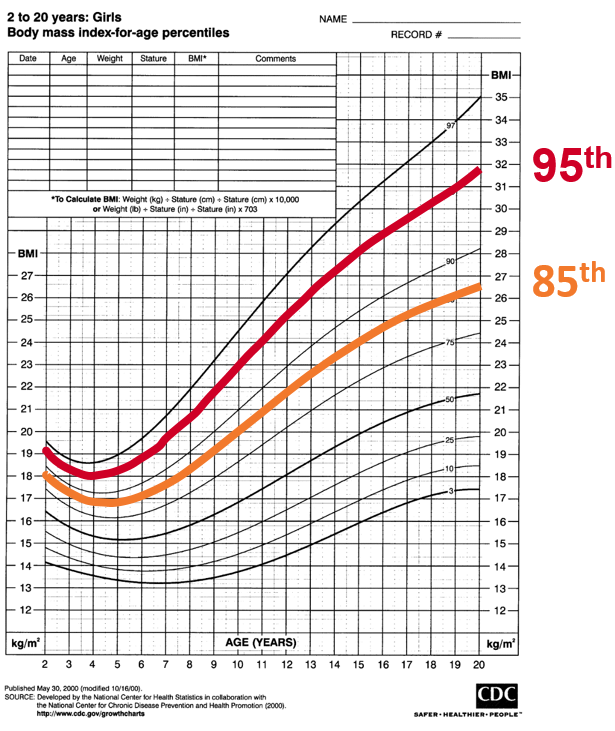How do I know if my child is overweight?
It can be difficult to recognise if your child is overweight or obese, and this usually requires assessment by a healthcare professional. For health purposes ‘obesity’ is defined by body mass index (BMI). BMI is a measure that helps to compare the child’s weight with their height. BMI is plotted on
to a growth chart, which compares the child’s BMI with other children in the population according to their age and sex. Your child would be considered to be ‘overweight’ if their BMI is between the 85th (orange) and 95th (red) percentile lines, and ‘obese’ if they are above the 95th (red) percentile
line.

It is important to note that body shape is also an important indicator of potential health complications associated with a high BMI. For example, we know that people who carry weight around their tummy are at increased risk of heart disease and diabetes compared to people who carry weight more around their hips.
Is being overweight in childhood a problem?
Being overweight in childhood can be dangerous to an individual’s health. Overweight children and adolescents are more likely to develop future problems as a result of their weight, such as heart disease and diabetes. Overweight or obesity in childhood can lead to significant serious
health issues in early adulthood. Some adolescents can also develop health-related problems, such as diabetes, even before they enter adulthood.
What health issues are associated with being overweight in childhood?
Children and adolescents who are overweight are at risk of weight related health problems. This can affect different parts of their body and may not be immediately apparent. Although not all children who are overweight will have these problems, it is important for your healthcare
professional to assess your child for the following potential issues.
| Effects of obesity on other parts of the body |
| Hormones |
Type 2 diabetes, early puberty, menstrual problems, excess hair in girls |
| Heart |
High cholesterol levels, high blood pressure, heart problems |
| Lungs |
Breathing problems during sleep (eg. snoring) and asthma |
| Mood and wellbeing |
Poor body image, depression, problems at school such as bullying and not doing well at school, low self-esteem, poor eating habits |
| Digestive tract |
Fatty liver, reflux, constipation, gallstones |
| Bone |
Hip and joint problems |